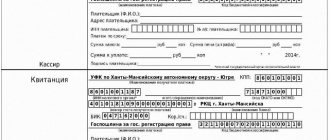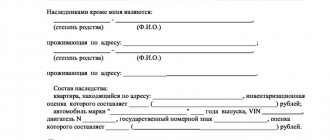Andrey Illarionov, expert at the Association of Tax Consultants
This is the question that has been worrying all taxpayers for the last few years. Six years have passed since the Supreme Court of the Russian Federation came to the conclusion that state registration of the right to a thing is established in order to ensure the stability of civil circulation and is not a prerequisite for recognizing it as real estate (paragraph 38 of the resolution of the Plenum of the Supreme Court of the Russian Federation dated June 23, 2015 No. 25 “On the application by courts of certain provisions of Section I, Part One of the Civil Code of the Russian Federation”).
Since then, judicial practice in determining whether property belongs to real estate has developed principles for determining real estate. The principle established by the Civil Code of the Russian Federation that immovable things include land plots, subsoil plots and everything that is firmly connected to the land, that is, objects whose movement without disproportionate damage to their purpose is impossible, including buildings, structures, unfinished construction projects, turned out to be insufficient , and therefore, judicial practice is based on the following five principles:
- The object is registered in the Unified State Register of Real Estate.
- The object is included in the real estate according to the Classifier OKOF OK 013-2014, and part 2 of Art. 2 of the Technical Regulations on the safety of buildings and structures.
- The functioning of the facility is an integral part of the functioning of real estate. It cannot be used outside the building.
- The object is located on a monolithic foundation and is technologically connected to other objects by underground communications.
- The object does not have independent useful properties. It cannot be used in isolation from the land on which it is located.
The last three principles, in my opinion, are evaluative in nature, and therefore give rise to a lot of controversy, which led, as in the case of Art. 54.1 of the Tax Code of the Russian Federation, to a situation of legal uncertainty.
In general, the Federal Tax Service has adopted a mechanism such as the definition of certain principles of taxation, instead of specific norms. In practice, this approach leads to the fact that the taxpayer becomes defenseless against possible claims from tax authorities.
Recently, the Supreme Court of the Russian Federation issued the following Determination of the Supreme Court of the Russian Federation No. 308-ES20-23222 dated May 17, 2021, the court gave the following clarifications (the dispute concerned the issue of whether a power plant should be considered real estate or equipment).
A thing is immovable either by virtue of its natural properties (paragraph one of paragraph 1 of Article 130 of the Civil Code of the Russian Federation), or by virtue of a direct indication of the law that such an object is subject to the regime of immovable things (paragraph two of paragraph 1 of Article 130 of the Civil Code of the Russian Federation).
In accordance with the classifiers, equipment does not belong to buildings and structures, forming an independent group of fixed assets, with the exception of cases expressly provided for in the classifiers, when individual objects are recognized as an integral part of buildings and are included in their composition (for example, communications inside buildings necessary for their operation; equipment for built-in boiler installations, water, gas and heat-conducting devices, as well as sewerage devices).
Accordingly, according to the general rule, exceptions from the object of taxation provided for by subparagraph 8 of paragraph 4 of Article 374 and paragraph 25 of Article 381 of the Tax Code of the Russian Federation are applicable to machinery and equipment that acted as movable property during their acquisition and were legally registered as separate inventory items, and not as components of capital structures and buildings.
Thus, there is one more clarification from the RF Supreme Court, but uncertainty remains as long as there are evaluative principles and not specific rules of law.
State registration of ownership and other proprietary rights to real estate
The need to register such rights (their occurrence) is indicated in paragraph 1 of Art. 131 Civil Code of the Russian Federation, part 3, 6 art. 1 of the Law on State Registration of Real Estate.
In addition to the right of ownership, in particular, the following rights must be registered (clause 1 of Article 216 of the Civil Code of the Russian Federation):
- economic management;
- operational management;
- permanent (indefinite) use of a land plot;
- easement (also registered as a restriction, encumbrance).
Andrey Nikonov, senior partner
The use of vague formulations will make it difficult to liberalize judicial practice in this area. The Ruling of the RF Armed Forces No. 308-ES20-23222 dated May 17, 2021 states that:
- criteria incorrectly used against taxpayers cannot be used “on their own,” rather than cannot be used at all;
- these criteria “do not allow us unambiguously resolve the issue of entitlement” to the benefit.
It turns out that the presence of “a strong connection between a thing and the earth, the impossibility of dividing a thing in kind without destroying, damaging the thing or changing its purpose, as well as connecting things for general use into a complex thing” are those legal facts that can affect resolving the issue of entitlement to benefits, but in conjunction with other circumstances. To Akimi?
The definition repeats the earlier conclusion of the SKES that the benefit is applicable “to machinery and equipment that acted as movable property during their acquisition and was legally registered as separate inventory items, and not as components of capital structures and buildings.” Using the conjunction “and” means that both conditions must be met. Not only should accounting rules and OKOF allow equipment to be taken into account separately, it also needs to be purchased separately (not as part of real estate). It is interesting in this regard, if a hotel with a power plant installed nearby and the building in which it is installed were purchased together as real estate, would the verdict be in favor of the inspection? Judging by the Definition, such a power plant cannot be taken into account as part of the building; it must be taken into account as equipment. Thus, the second condition (separate accounting) is met, but the first (purchase as movable property) is not.
Then the question arises with another criterion specified by SCES: equality. Those who bought equipment together with a power plant building or together with a complex of real estate (hotel complex) should not be placed in an unequal position compared to those who bought the same set in parts, from different places and then put the “puzzle” together into a complex.
Legal registration as a separate object is another clearing for disputes. One or more items of the same or different purposes, having common devices and accessories, common controls, mounted on the same foundation, as a result of which each item included in the complex can perform its functions only as part of the complex, and not independently - are taken into account as a single object. But if the SPIs of these parts are significantly different, then each is taken into account as an independent inventory item. The vector of disputes is clear: whether SPIs differ significantly or not, whether they can function separately or not, whether all the signs of structurally articulated objects should be present or the majority, etc.
My forecast taking all this into account. Will the Definition change judicial practice? Yes, courts will need additional justification for denying the right to benefits in those situations. Additional arguments will be needed on issues that were not previously included in the scope of analysis. Will judicial practice become more liberal?
Depends on where the court is considering and who is considering it:
- if the judge(s) previously rewrote the inspection’s “blanks,” the inspection will now “improve” its review. It will add to it those additional criteria the importance of which was pointed out (or pointed out again) by the Supreme Court. She will write why these criteria seem to be met. And the court will include this justification in the reasoning, formally completing the determination and transferring the dispute from law to evidence;
- those same judges who are not used to resolving a dispute this way will receive additional “food for thought.” Cases that fall into their hands have every chance of a liberal outcome.
The relationship between the concepts of “thing” and “property”
The concepts of “thing” and “property” overlap in many ways and coincide, since property is primarily objects of the material world that have some materialized form, i.e. things. However, the term “property” is somewhat broader in scope , since, in particular, it covers, along with the concept of “thing,” the concept of “property rights”.
The term “property” has many meanings: it includes not only things and property rights, but in some cases also property obligations (for example, in inheritance). For the meaning of the term “property” in the Civil Code of the Russian Federation, see below.
The practical value of classifying property rights as property is that they (the rights) can also be the subject of transactions . For example, a citizen owns a car and wants to sell it. Another citizen has already transferred the car under a purchase and sale agreement, but has not yet received payment for it. In the first case, a citizen can sell his car (thing) and get money for it. In the second case, a citizen can also, in fact, sell to a third party his rights of claim against the buyer for payment of funds for an already sold car (i.e., transfer the rights of claim under an assignment of rights agreement). In the first case, the subject of the transaction is a thing (a car), in the second - a property right (right of claim) under a contract for the sale of a car.
The subject of the transaction can be not only liability rights, as in the example above, but also proprietary rights, exclusive rights and some corporate rights, which will be discussed in more detail below.
Igor Pavelev, tax consultant, 1st class advisor to the state civil service of the Russian Federation
The Judicial Collegium for Economic Disputes of the Supreme Court of the Russian Federation, in its Ruling dated May 17, 2021 No. 308-ES20-23222, resolved a dispute related to the taxpayer’s right to be exempt from property tax on an object of fixed assets, which the taxpayer regarded as an object of movable property , which is subject to the benefit provided for by subparagraph 8 of paragraph 4 of Article 374 and paragraph 25 of Article 381 of the Tax Code of the Russian Federation, and the tax authority regarded it as an object of real estate that is not subject to tax exemption provided for by subparagraph 8 of paragraph 4 of Article 374 and paragraph 25 of Article 381 Tax Code of the Russian Federation.
When interpreting the rules of law enshrined in subparagraphs 8 of paragraph 4 of Article 374 and paragraph 25 of Article 381 of the Tax Code of the Russian Federation, the court set aside the literal interpretation of these rules, since the concepts of movable and immovable property used by the legislator in their formulation did not allow, in the court’s opinion, unambiguous resolve the issue of whether or not the taxpayer has the right to the benefit provided for in subparagraphs 8 of paragraph 4 of Article 374 and paragraph 25 of Article 381 of the Tax Code of the Russian Federation.
Instead, the court, taking as a basis the content of the provisions of subparagraph 8 of paragraph 4 of Article 374 and paragraph 25 of Article 381 of the Tax Code of the Russian Federation, identified in the Resolution of the Constitutional Court of the Russian Federation dated December 21, 2018 No. 47-P, came to the conclusion that the benefit established the specified norms of law should be provided to those subjects of tax legal relations who make investments in the renewal of production equipment, understanding by the specified equipment fixed assets allocated to an independent group of fixed assets in accordance with the All-Russian Classifier of Fixed Assets OK 013-2014 (SNA 2008), except for those expressly provided in classifiers of cases when individual objects are recognized as an integral part of buildings and are included in their composition (for example, communications inside buildings necessary for their operation; equipment of built-in boiler plants, water, gas and heat supply devices, as well as sewerage devices) and regardless on whether, after completion of installation, the specified fixed assets will form a complex thing with the real estate object.
Of course, the approach to the interpretation of the provisions of subparagraph 8 of paragraph 4 of Article 374 and paragraph 25 of Article 381 of the Tax Code of the Russian Federation, demonstrated by the Judicial Collegium for Economic Disputes of the Supreme Court of the Russian Federation, is positive news for taxpayers, which will allow resolving a large number of controversial issues related to the provision of benefits when taxation of movable property in their favor.
At the same time, it should be noted that the interpretation of the rules of law by the Judicial Collegium for Economic Disputes of the Supreme Court of the Russian Federation, in this case, as in the consideration of case No. A76-46624/2019 (the case of Mary Firm LLC), is more and more begins to resemble not the actual interpretation of legal norms, but rule-making.
* * *
Today, clear criteria for a real estate property are not established by current legislation. Neither representatives of the Ministry of Finance and the Federal Tax Service, nor representatives of other interested departments can formulate them unambiguously. Even the courts differ in their opinions on recognizing an object as immovable, while the courts note that the state registration of an object in itself does not determine the status of an object as immovable, since this requires the presence of certain characteristics. Recognition of an object as immovable as an object of civil rights on the sole basis that it is firmly connected to the land and a technical passport has been issued for it is impossible. From the latest clarifications of the Ministry of Finance it follows that in order to create real estate objects it is necessary to prepare project documentation, obtain construction permits and to put the object into operation. And the issue of the status of the object is decided at the stage of developing project documentation and obtaining permits.
Pharmacy: accounting and taxation, No. 2, 2021
Sergey Ryumin, managing partner of KAF INVEST-AUDIT LLC
Tax experts have for several years raised the issue of the lack of clarity of the criteria used to divide property into movable and immovable for property tax purposes. The use of the principles enshrined in Article 130 of the Civil Code of the Russian Federation as a criterion for such division has shown to be ineffective. The rejection of this approach was declared for the first time in the Determination of the SKES of the Armed Forces of the Russian Federation dated July 12, 2019 No. 307-ES19-5241 in case No. A05-879/2018 ZAO Lesozavod 25. Let me remind you that in this case the judges decided that the fundamental question for tax purposes is whether such property performs any independent function or is it intended only for servicing an immovable thing (building, structure, etc.), and not whether the object has close physical connection with a building, structure or other real estate and the ability to function only in such connection.
However, even this approach did not bring complete clarity to the issue of dividing property into movable and immovable, and disputes between taxpayers and tax authorities on this issue continued. The determination of the Supreme Court of the Russian Federation No. 308-ES20-23222 dated May 17, 2021 was a new step in this direction. In it, the RF Armed Forces continued and concretized its approach expressed 2 years earlier. In particular, the judges noted that neither connection with land nor registration in the Unified State Register of Real Estate can be unconditional criteria by which an object is classified as real estate. For these purposes, we must proceed from the accounting rules, namely: if property according to OKOF is considered equipment, and not a building or structure, then it is movable. According to the classification of fixed assets (All-Russian Classifier of Fixed Assets (OKOF) OK 013-2014 (SNS 2008) valid from 01/01/2017 and the previously valid OKOF OK 013-94), equipment does not belong to buildings and structures and forms an independent group of fixed assets. An exception is cases directly provided for by OKOF, when individual objects are recognized as an integral part of buildings and are included in their composition (for example, communications inside buildings necessary for their operation; equipment for built-in boiler systems, water, gas and heat-conducting devices, as well as sewerage devices) .
In the letter dated May 21, 2021 No. BS-4-21/7027 “On the criteria for distinguishing types of property (movable or immovable) for the purpose of applying Ch. 30 of the Tax Code of the Russian Federation”, the Federal Tax Service of Russia actually agreed with the principle proposed by the Supreme Court that it is necessary to divide movable and immovable property when calculating the property tax of organizations according to the OKOF. New, clearer criteria for dividing property and the fact that the federal tax service has officially brought its opinion on the need to apply them to the attention of territorial tax authorities will certainly reduce the number of disputes on this range of issues.
To what extent, time will tell, but it is clear that risks regarding corporate property tax will still remain in a number of situations. In particular, disputes will apparently persist regarding multifunctional equipment installed in buildings (structures), complex inseparable objects that contain separate inventory objects, and in other similar situations.
Why do you need to switch to a new calculation?
Until 2014, the inventory value established by the BTI was taken as a basis. It took into account only the degree of wear and tear of the building and the cost, so it was considered obsolete. The cadastral value is determined by Rosreestr, and it is closer to the market price. This means that taxes will gradually increase. To find out what tax you will have to pay , you need to know both the inventory and cadastral value of your property.
A certificate of inventory price can be obtained from the BTI. The cadastral value is determined in several ways. You can do this on the website of Rosreestr or the Federal Tax Service, for this you should open a personal account there. Easier and faster - on the portal EGRN.Reestr .
You just need to enter the cadastral number of the object or its full address on the main page of the resource and immediately receive an urgent extract. It states the cost of the object.
Alexey Artyukh, partner at Taxology
After the appearance in 2021 of the well-known Definition of the SKES of the Armed Forces of the Russian Federation in the case of CJSC Lesozavod 25, many taxpayers began to hope for an end to the snowballing disputes about the reclassification of fixed assets from movable property to taxable real estate. Moreover, most often such requalification was carried out not by establishing a close connection with the land in the disputed object in accordance with Article 130 of the Civil Code of the Russian Federation, but by recognizing it as part of a larger complex or indivisible thing, as a rule, undoubtedly immovable.
Unfortunately, one case of Sawmill 25 was not enough to stop the wave of additional charges based on the inclusion of other, independent inventory accounting units in larger objects.
Over the past two years, additional charges have affected a wide range of production facilities: transformers, power lines, switches, communication lines, pipelines, pumps, boiler room equipment, etc. In fact, judicial practice turned in favor of taxpayers only for objects close to those involved in the Sawmill 25 case - in-shop production equipment. All other types of fixed assets remained within the scope of requalification despite the criteria proposed by the SKES RF Armed Forces.
In practice, arguments have become widespread not only about the participation of disputed objects in a “single technological process” (which should entail recognition of the entire enterprise producing a single type of product as a single immovable object), but also arguments that the division of property into movable and immovable should be carried out depending on the OKOF code. According to many courts and tax authorities, the code from the “Machinery and Equipment” section indicates the movable nature of the object, but the code from the “Structures” section indicates the opposite, regardless of the physical characteristics of such an object.
Of course, nothing like this was present in the position of the SKES RF Armed Forces in 2021: the Board never proposed a contrast based on the movable-real estate criterion through the OKOF section or code.
And in a fresh Determination, the Court confirms this position, repeatedly repeating and paraphrasing its theses two years ago, while at the same time supplementing them, for example, directly indicating that the norms of civil legislation on complex and indivisible things (Articles 133, 134 of the Civil Code of the Russian Federation) do not correlate with tax purposes of exempting property from the fiscal burden, and therefore, as a general rule, should not be taken into account.
Another conclusion of the judges is also fair: the establishment of an object of taxation for the property tax of organizations in Article 374 of the Tax Code of the Russian Federation depends not only on civil law norms, but also at the same time on accounting rules, which contain their own criteria for both classifying an object as fixed assets and its identification as a separate, independent inventory unit. In PBU 6/01, such criteria are the fulfillment of a separate function by the object and excellent useful life, which makes it possible to isolate the object from undisputed real estate (this is clearly manifested, for example, in disputes about technological pipelines, which today are recognized as part of the overpasses underneath them despite the difference in useful life use 5-10 times).
By the way, by real estate the SKES RF Armed Forces understands, as this is the first time directly mentioned in the Definition, buildings and capital structures. As a contrast, the formulation “updating production equipment and creating non-capital structures” is used, which makes it possible to equate the tax and legal regime of equipment and non-capital structures themselves. This is completely logical, since by virtue of clause 10.2 of Article 1 of the Civil Code of the Russian Federation, non-permanent structures, by definition, do not have a strong connection with the land and therefore cannot be real estate. Obviously, this contrast between capital and non-capital structures should refute the popular argument in practice that all structures are real estate simply by virtue of assigning them such an OKOF code. In general, the use of OKOF here is necessary not for the classification of real estate (the compilers of the Classifier proceeded from other criteria), but for understanding what we have before us: an independent accounting object that has its own code, or part of another, larger one. And only after this, in relation to each object, it is necessary to establish signs of connection with the land and qualify it as real estate.
It is noteworthy that the SKES of the RF Armed Forces also assessed another argument, widespread within this category of disputes, that the disputed object (the power plant in this case), if removed from the installation site, will not be able to function outside the technological system. This argument is found in almost all disputes concerning energy facilities, technological pipelines, etc. However, the Court directly answers that it is aimed at an unacceptable assessment of the appropriateness of the taxpayer’s actions and has nothing to do with the physical characteristics of the thing in the light of Article 130 of the Civil Code of the Russian Federation. Thus, the installation of a disputed object, even with the use of relatively extended communications (cables and power lines, as in the commented case), does not change the physical characteristics of the thing and does not allow such an object to be considered real estate, if it is not functionally intended to improve the functioning of a building or capital structure, to to which it is attached.
It seems that with the advent of the position of the Supreme Court of the Russian Federation, the most popular arguments of the tax authorities in this category of disputes should be recognized as unlawful:
- participation of the facility in a single technological process;
- the impossibility of the object functioning outside the technological system of the production chain (in practice, this argument is often presented through the concept of “the normal mode of using the object only in a stationary, mounted state”);
- the object has the OKOF code from the “Structures” section without identifying its signs of capital;
The commented Definition does not so much offer new ones as it specifies and more clearly places in place those approaches that were laid down in the case of CJSC Lesozavod 25, but were not heard in practice. And in this light, the significance of the Definition is difficult to overestimate. At the same time, there is a serious possibility that inertial judicial practice will not immediately and completely accept the approaches proposed by the Supreme Court, as has happened more than once after the Sawmill 25 case, and on other issues - and then the Court will have to reconsider the cases again and again with different factual circumstances on the same issue.
Widespread dissemination and application of the approaches from the Definition will minimize unfounded claims against bona fide taxpayers, in particular, those who do not abuse manipulations in accounting for fixed assets.
It seems that the intensity of disputes around machinery and equipment should decrease significantly, while today’s requalification of non-capital structures should also become a thing of the past (however, without a review of the dispute regarding this category of objects by the RF Supreme Court, there is still a serious risk of a long-term rejection by the courts of the stated position).
However, we should not forget about another related category of disputes - about the tax qualification of various improvements to land plots (platforms, paving, etc.), which may be fixed assets, but do not meet the criteria of an independent thing (property). Despite the fact that such objects in the practice of the SKES of the Armed Forces of the Russian Federation, and before that - the Presidium of the Supreme Arbitration Court of the Russian Federation - have been repeatedly recognized as improvements to the site, and not independent things, for tax purposes such objects are suddenly recognized as structures subject to taxation. Of course, such objects stand apart from machinery, equipment and non-permanent structures, but their qualifications also raise a lot of questions.
Of course, current and future disputes will not stop with the advent of the Determination dated May 17, 2021. However, it provides a good reason for adjusting legal approaches in such cases, as well as for re-evaluating the methods and risks in accounting for taxpayers, who often need a detailed justification for the qualification of disputed objects even before the tax service turns its attention to them.
Tax deductions
To ensure that taxes are not prohibitive, special deductions have been introduced - part of the square meters is removed from the total area of the object. The tax becomes lower.
There are also rules here:
- You need to subtract 50 sq.m. from the square footage of the house.
- Of the apartment area – 20 sq.m.
- Of the room area - 10 sq. m.
It turns out that the owner of an apartment with an area of 50 sq.m. will be charged tax only for 30 sq.m. And for a room measuring 10 square meters you won’t have to pay at all.
Nikolay Andreev, head of tax practice at Zartsyn and Partners Law Firm
Determination of the Supreme Court of the Russian Federation No. 308-ES20-23222 dated May 17, 2021, in my opinion, this will become another reason for a round of confrontation between the tax service and taxpayers.
The very fact that, despite earlier decisions (for example, on the Sawmill), the case reached the Supreme Court is an indicator of the fragility and instability of the judicial position on the qualification of property as movable or immovable.
In addition, this is a wonderful indicator of how, in the right situations, tax authorities either remember the fundamental concepts of civil law (thing and accessory, complex thing, etc.) or forget.
This time, it seems, the tax authorities have decided to forget again.
It is also interesting that the Supreme Court indicated that the impossibility of using a substation after installation without causing disproportionate damage to the substation is an unacceptable assessment of the economic feasibility of entrepreneurs’ decisions.
Why is this interesting?
Prior to that, for many years the courts had indicated that interference in the economic feasibility of a transaction by tax authorities was inadmissible. All these years, such an instruction was rather a salvation for taxpayers, but now it has become a way to combat them.
In my opinion, this is the most controversial position of the Supreme Court in this Determination. The lower courts, in essence, want to squeeze into a Procrustean bed of formal assessments. And over time, formalism will move from cases of movable property - real estate to tax disputes in general. How will it be possible to evaluate, for example, transaction structures in IT projects and digital ecosystems? After all, many transactions there are structured precisely from the position of economic feasibility and the final economic result.
In general, if we are waiting for a new turn in tax disputes, it will not only be in movables - real estate.
How to find out if tax has been charged
According to the rules for taxing real estate for individuals, the deadline for paying taxes is December 1 of each year. Then they begin to fine debtors who did not manage to pay before this date. Every day of delay - plus additional penalties.
If you don’t pay taxes for a long time, you will have to deal with the court, which will oblige you to pay anyway. And then, in addition to the penalty, an enforcement fee and legal expenses will be added. Money will be withdrawn from the card by default, and if it does not have the required amount, it will be blocked until the account is replenished. A debt of 30 thousand rubles or more may result in you not being allowed to go abroad.
The tax is calculated for the previous year, and in the fall of the current year each property owner receives a receipt or notification of the amount. Those who have a personal account on the Federal Tax Service portal automatically receive notifications there. Citizens without a personal account are sent receipts by mail. You can also find out information about charges by visiting the tax office or MFC in person.
Taxes can be paid through:
- personal account of the Federal Tax Service
- Internet bank
- bank or terminal by receipt
Text: Olesya Moskevich










